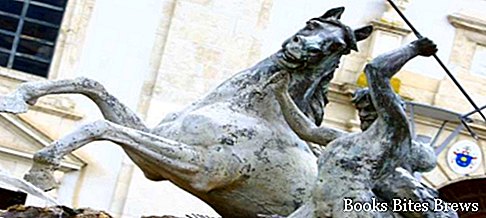What to see in Caltanissetta, itinerary including the main monuments and places of interest, including the Church of Sant'Agata, the Cathedral, the Pietrarossa Castle and the archaeological museum.
Tourist information
Located in Sicily, Caltanissetta is famous for its sulfur mines and for the agricultural activities carried out in the area, which develops in the upper Salso valley.
Some evidence confirms that this city already existed in the period preceding the Greek domination and was called Nissa.
Later it took the name Caltanissetta with the passage to the Arabs, who built a castle there.
In the eleventh century it was Ruggero Normanno who seized it, before passing into the hands of his son Giordano who transformed it into a county of the Aragonese.
At the end of the thirteenth century it passed to the Lancia family and from 1406 to the Moncada family, before becoming part of the Kingdom of the Two Sicilies.
The tourist itinerary starts from the Church of Sant'Agata, a seventeenth-century building located in Corso Umberto I, having an interior with remarkable decorations and various works of art, including the Saint Ignatius in glory of Marabitti, an altarpiece made in marble located in the transept.
A short distance away, in via Matteotti, is the seventeenth-century Baroque Moncada Palace, while continuing on the way towards Piazza Garibaldi you come across the Palazzo del Municipio, before reaching the Cathedral, whose origins date back to the sixteenth century.
What see
The facade of the Cathedral of Caltanissetta from 1840 includes two bell towers on its sides.
In the interior with three naves it is possible to admire remarkable works of art, including the Baptism of Jesus, seventeenth-century painting placed in the first chapel on the right, the Archangel Michael, polychrome wooden sculpture of 1625 made by Volsi, the altarpiece of the Madonna with the Saints, placed on the high altar, and the Madonna del Carmelo, painting by the painter Paladino.
Also in Piazza Garibaldi are the Triton Fountain, which includes statues from Tripisciano, and the Church of San Sebastiano, characterized by a beautiful facade with three orders.
Recommended readings- Mazara del Vallo (Sicily): what to see
- Trapani (Sicily): what to see
- Randazzo (Sicily): what to see
- Milazzo (Sicily): what to see
- Sicily: Sunday day trips
Taking the homonymous street you reach the eighteenth-century Church of San Domenico, having an interior decorated with nineteenth-century stucco, where a painting by Borremans depicting San Vincenzo Ferreri and the Madonna del Rosario di Paladino are preserved.
Continuing along via degli Angeli you will find the deconsecrated church of Santa Maria degli Angeli, characterized by a beautiful baroque portal, and the remains of the Pietrarossa Castle, built by the Arabs.
Taking Viale Regina Margherita from Piazza Garibaldi, you reach the public park of Villa Amedeo, from where you can reach Via Colajanni, home of the archaeological museum, which collects finds from various eras from Capodarso, Gibil-Gabib and Sabucina.
In the same street there is the Folklore Museum, which preserves the statues depicting the Mysteries of the Passion of Christ, carried in procession during the Easter period, on the occasion of Holy Thursday.




